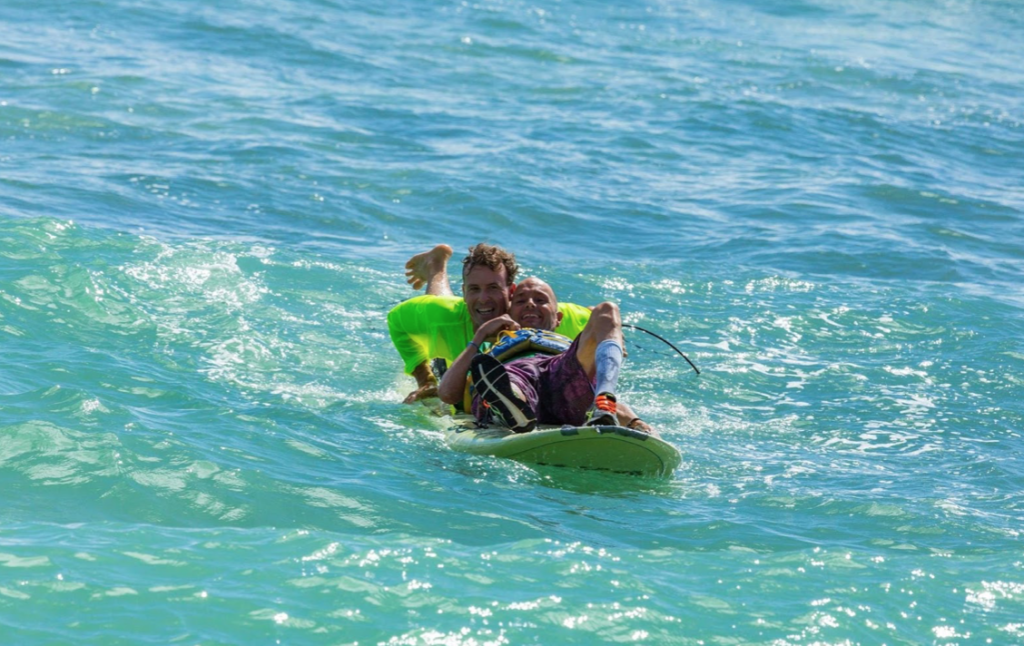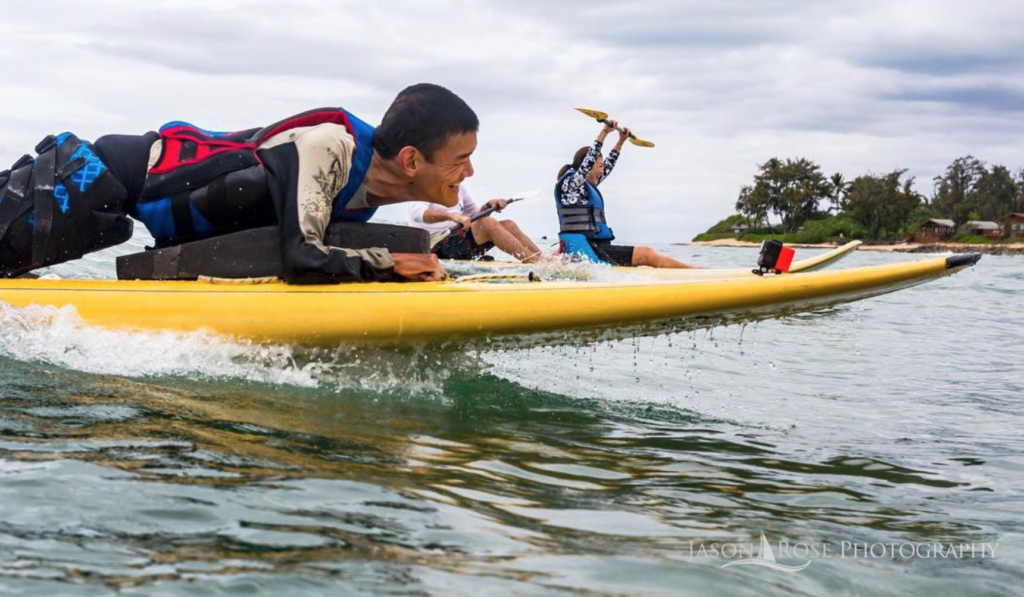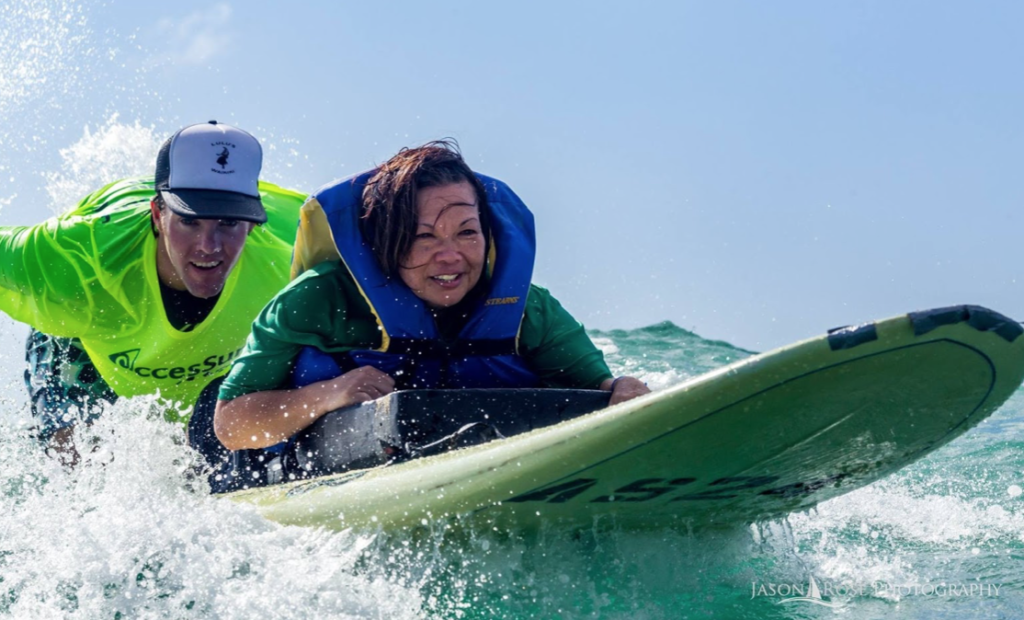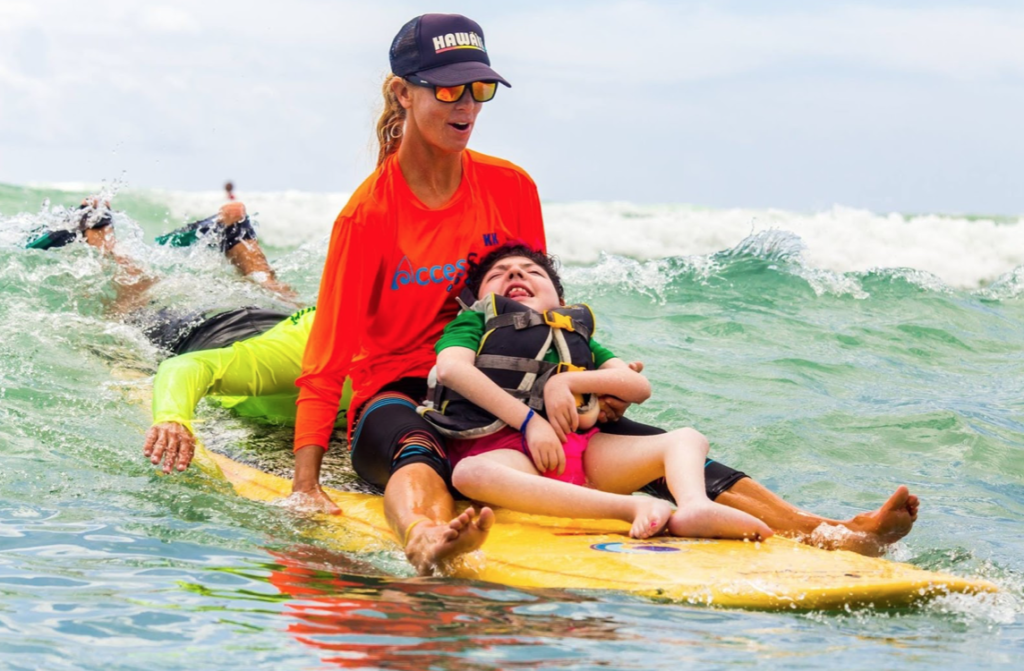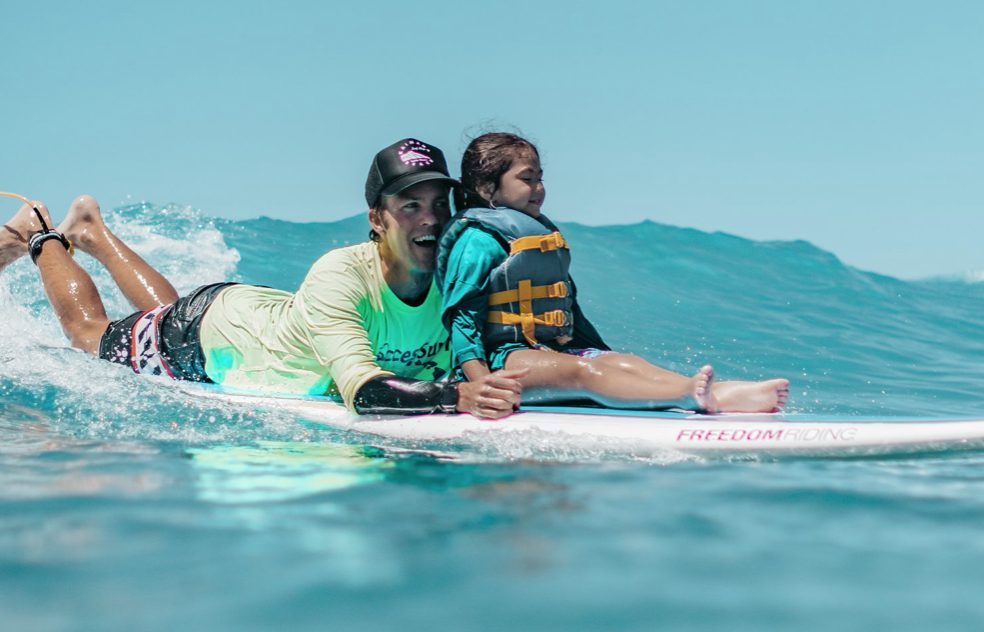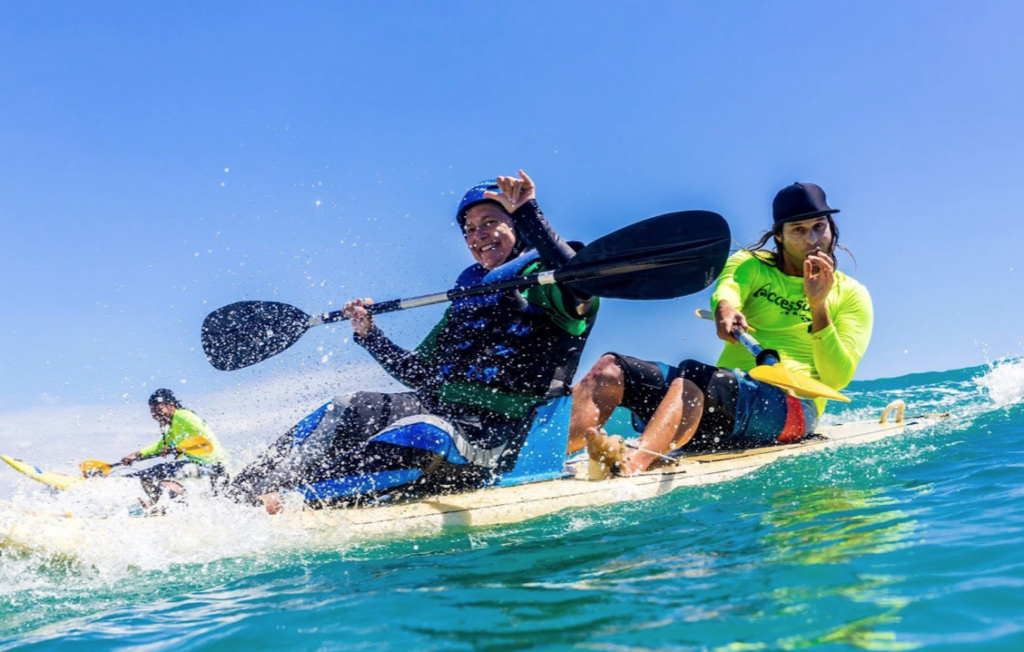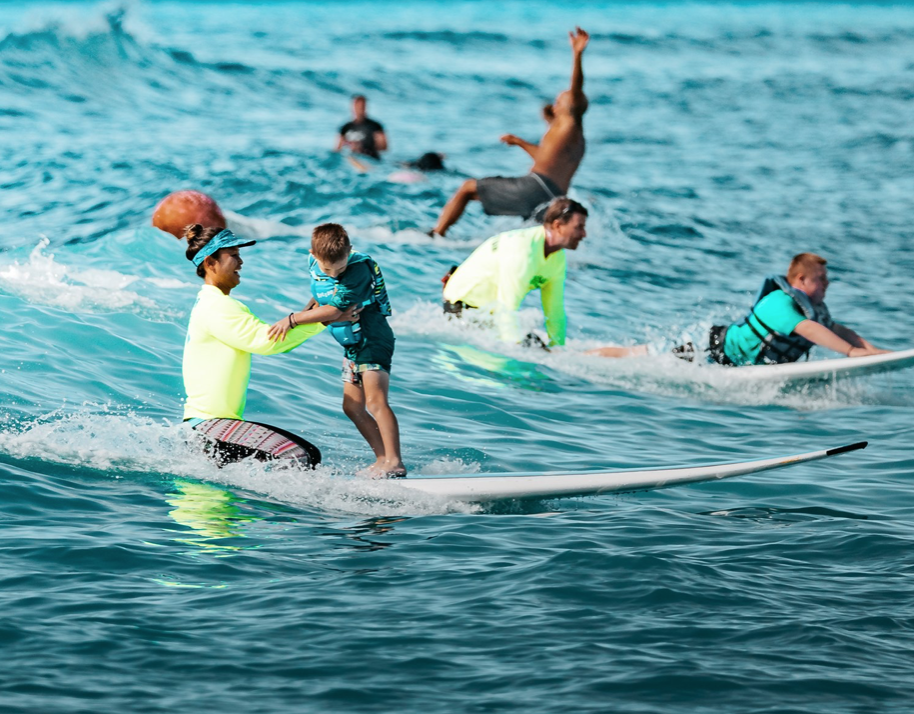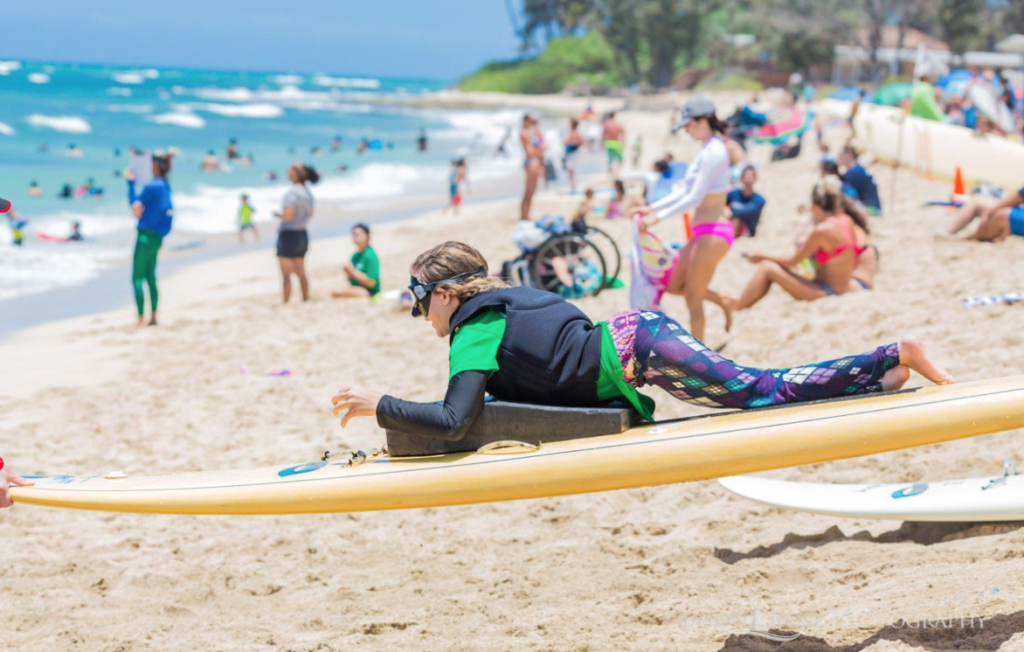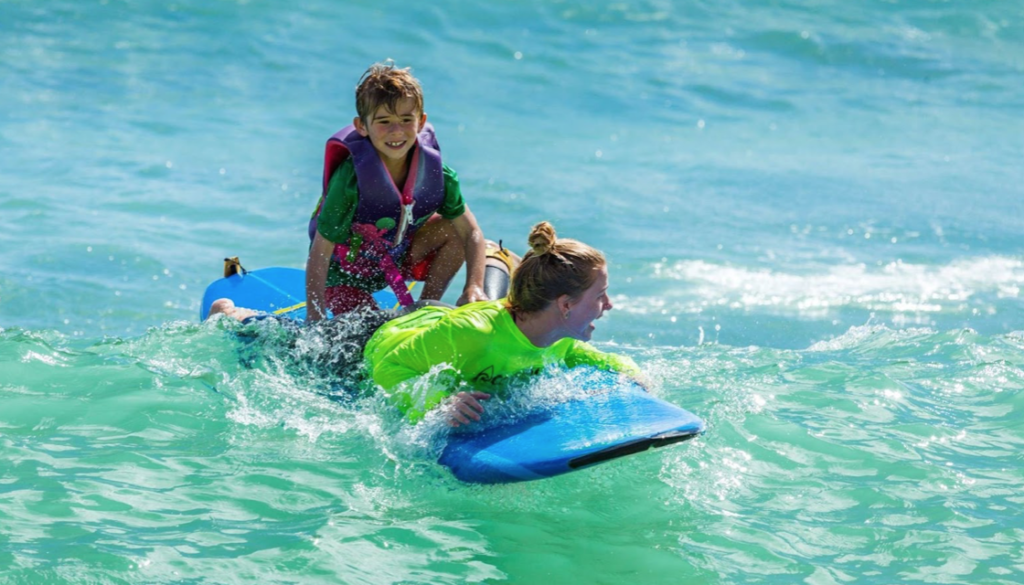Essential with People Who Have:
- Limited mobility and sensation
- Deformities, spasticity, or pain
- Pressure ulcers or high risk of pressure ulcers
- Cognitive impairment
- Postural instability or restlessness
Essentials:
- Always communicate before touching participant’s body or equipment.
- Ask if the person has recently been in the position and how long ago.
- If it is possible, allow a participant a choice in position.
- Watch for clothing shift.
- Be aware of medical devices or implants.
- Watch for skin and joint protection.
- Always do a visual and verbal check of the body and facial expressions.
- Be aware of sustained position and injury prevention.
- Support on fatty areas and avoid pressure on bony areas.
- Avoid pressure on red or irritated skin.
- When in doubt, ask a staff or profiler.
Wedge
- A wedge attaches onto a surfboard and raises the participant’s chest to make it easier so they can achieve the correct neck positioning.
- A wedge can reduce neck and lower back strain during prone paddling and can also protects and cushion the upper ribs.
- Wedges can also be used in different areas to maintain a position or support deformity/missing limbs.
- Be aware of the joint range in hips and knees. This may effect where pain or pull may occur.
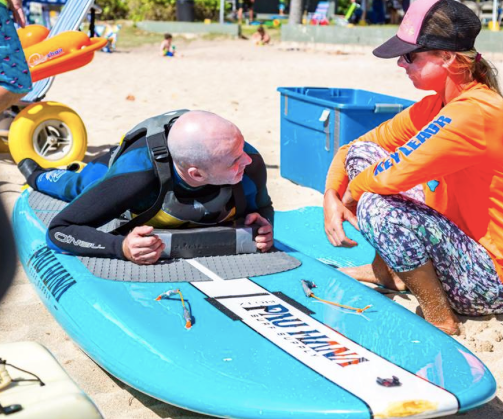
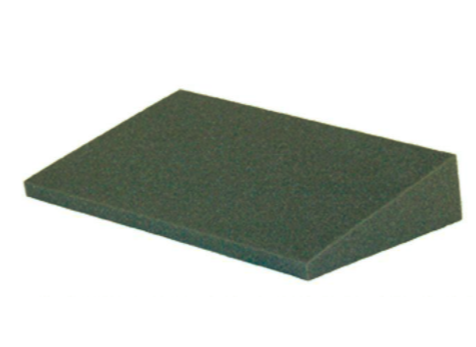
Chin Rest
- A chin rest relieves neck and upper back strain during prone paddling.
- Chin rests have adjustable settings to raise and tilt the participant’s head and neck to achieve the correct neck positioning.
- The correct position is as close to a neutral as possible. Hyperextension of the neck can put a person at risk for injury. Listen to the individual when positioning them.
- Chin rests are made out of a silicone or rubber material. To prevent allergic reactions, always ask participants if they have any allergies to silicone or rubber.
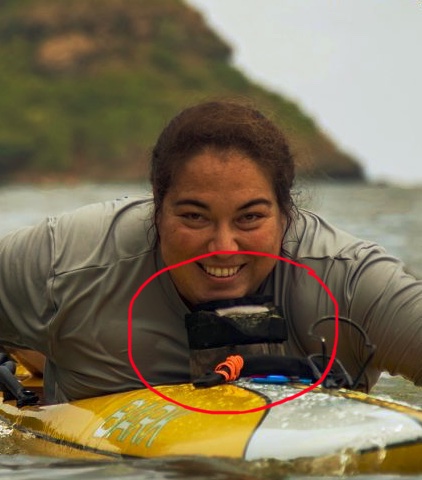
Positioning will change a person’s experience in all situations:
- Supine
- Prone
- Wedged
- Supported sit
- Sit
- Stand
- Tall kneel
- Low kneel
- Somewhere in between…


